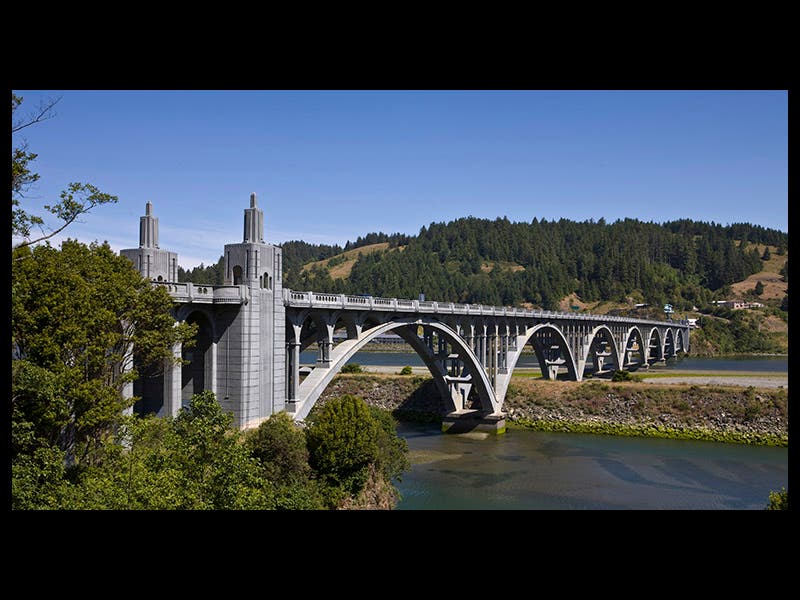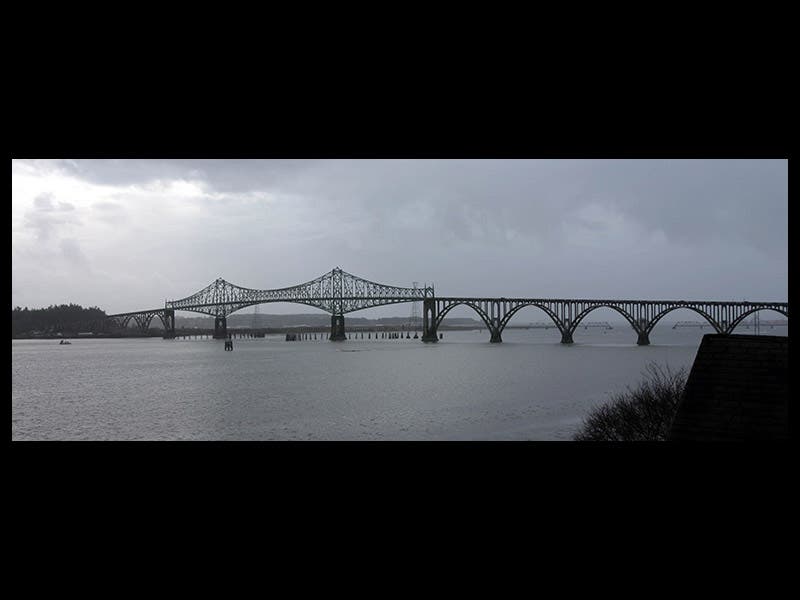Scientist of the Day - Conde McCullough


Conde Balcom McCullough, an American bridge engineer, was born May 30, 1887. If you drive on U.S. 101 from California to the state of Washington, you will pass over 10 concrete bridges as you go through Oregon that were designed by McCullough. I don't know how many bridges there are in total on the Oregon segment of Route 101--at least 50, it would seem--but the 10 that McCullough designed are all on the National Register of Historic Places, and none of the others are, which says quite a bit about McCullough's ability.
McCullough was born in Iowa and educated at Iowa State; he came to the Oregon Transportation Department in 1919 and soon started designing bridges for that state. All of the 10 surviving Route 101 Bridges were built between 1930 and 1936. The first one we show is the Isaac Lee Patterson Bridge, opened in 1931 (first image). It uses concrete arches rather than steel, because the damp salt air corrodes steel much too quickly. The arches are pre-stressed, a technique that McCullough used on this bridge quite successfully, but which he never tried again. The characteristic McCullouch touches are the Art Deco piers and towers, and the fine polish that was given to the concrete, done by hand in this case.
The Siuslaw River Bridge, a bascule bridge, opened in 1936 (second image). Here accommodation had to be made for shipping, so the center section opens up to allow ships to pass. Notice the pointed arches in the piers, and the Gothic-like towers on the piers for the Bascule section; McCullough liked to use Gothic elements in his bridges, as well as Art Deco, and several other styles. We show a detail of one of the Art Deco elements (third image).
The formerly-named North Bend Bridge opened in 1936. This is a very long bridge, and very high as well, again because of the need to have open shipping lanes (fourth image). In this case the long central spans are a pair of cantilevers made of steel, while the arches on either side are concrete. This bridge does not have the aesthetic unity of the Isaac Patterson Bridge, but apparently it has done its job very well. After McCullough’s death, the name of the span was changed to the Conde B. McCullough Memorial Bridge.
We saved everyone’s favorite McCullough bridge for last: The Yaquina Bay Bridge, which opened in 1936. What a beautiful structure (fifth and sixth images). This bridge is a through arch, with the central rainbow and the two adjacent arches made of steel, and the approach arches fashioned from concrete. In a photo of the approach arches from below (seventh image), one can see that McCullouch again combined Art Deco with Gothic. Note the detail even in the bridge’s underbelly, and the polished finish that was given to the concrete surfaces.
In those days, bridge engineers like to patent every little innovation as they were introduced, and so there was usually a lot of legal activity when a new bridge went up and other engineers claimed patent infringement. So McCullough had one additional feature of his education that distinguished him from many of his predecessors and contemporaries--he was also a lawyer. He had no scruples about using techniques developed by others, and he defended himself ably and successfully from a variety of infringement lawsuits. It may not be a coincidence that such lawsuits--and royalty payments--dropped off dramatically after the McCullough era.
Two of the images above were taken by Jon Rollins, who is a technician in the Library’s Digital Initiatives division and every day prepares this blog for publication. Thanks, Jon.
Dr. William B. Ashworth, Jr., Consultant for the History of Science, Linda Hall Library and Associate Professor, Department of History, University of Missouri-Kansas City. Comments or corrections are welcome; please direct to ashworthw@umkc.edu.











